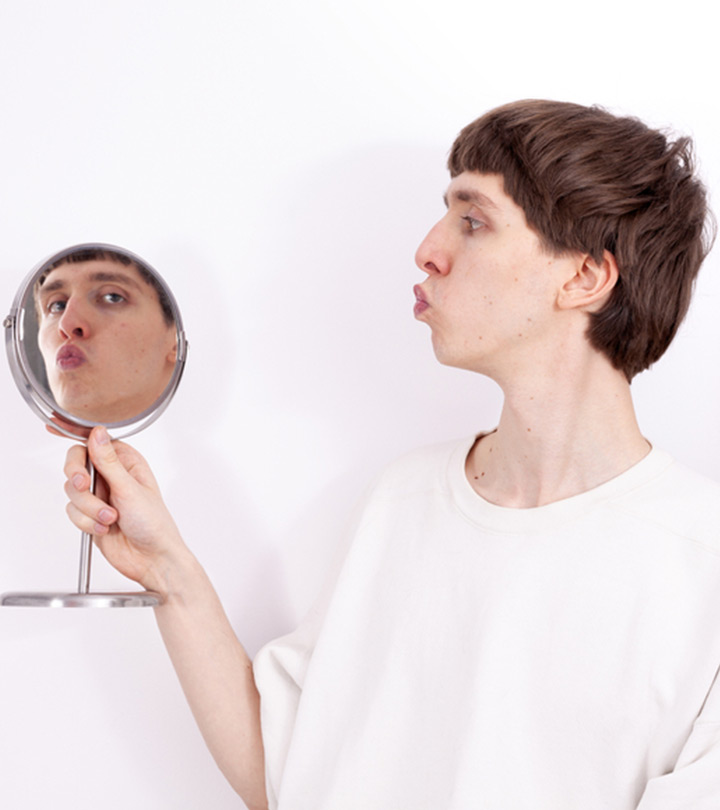10 Types Of Personality Disorders That Needs More Awareness

Image: Shutterstock
Personality disorders have been one of the most hushed topics in our society. Sadly, we read more about them from memes and posts than from legitimate sources of information. A personality disorder is described as a form of mental illness that occurs when the person’s thoughts and behavior cause them to feel stressed. Those people often have inflexible thoughts that limit their ability to deal with pressure, solve problems or maintain healthy relationships with people. There are numerous personality disorders, and only a qualified psychiatrist, psychologist, or social worker can determine if a person has any kind of mental disorder. The symptoms and signs of various of these mental health problems may overlap, but every type has a particular characteristic. Here are some of the common ones that need better recognition from our society. Read on to know them all.
1. Borderline Personality Disorder
People who suffer from Borderline personality disorder (BPD) struggle to maintain meaningful relationships. A borderline personality disorder is identified by a high emotional state and self-harming tendency (1). They also have a tendency to judge themselves and others as entirely positive or negative. Other visible traits of a BPD person are erratic behavior and fear of abandonment (2).
2. Antisocial Personality Disorder
People with antisocial personality disorder appear to thrive in conflict. They might get into verbal or physical fights with strangers they don’t have a relationship with, like the clerk at a store. They don’t have any concern about the norms of society or any social conduct. They also engage in regular litigation and legal disputes. People with antisocial personality disorder are often violent in relationships and have no guilt in doing so (3). There are many cinematic characters that try to portray antisocial behavior, like the Joker and Hannibal. Even though their behavior is quite dramatized for entertainment purposes, many iconic villains with a human side plus an in-depth character are said to have this disorder.
3. Histrionic Personality Disorder
The histrionic personality disorder is characterized by extreme emotional, overwrought, or dramatic behaviors in situations that don’t need such a response (4). The reason for this dramatic behavior is to draw people’s attention. People with this condition tend to focus on their appearance and always seek approval from others. They are the true attention seekers and feel very restless if they think that they will be forgotten or ignored if not paid attention. It does have similarities with narcissism but the need for drama is higher, rather than always thinking about their own appearance or personality.
4. Narcissistic Personality Disorder
People suffering from narcissistic personality disorder are more likely to feel high self-esteem that masks their insecurity. When it comes to relationships with other people, narcissists are known to abuse others without any remorse. Narcissists are extremely sensitive to criticism and failure. People who suffer from this disorder frequently complain about physical disorders that can’t be diagnosed by medical aid.
5. Avoidant Personality Disorder
An avoidant personality disorder is characterized by an extreme fear of criticism and rejection, resulting in a failure to build meaningful relationships. Avoidant people need to be loved by all and are devastated if they believe they did something wrong before others. Because of their vulnerability to emotional trauma, they are cautious around social gatherings and are very strict with themselves. They tend to feel very insecure all the time and have the tendency to mess up a perfectly healthy relationship. It is very common for them to get hurt easily because they are high on sensitivity.
6. Obsessive-Compulsive Personality Disorder
If you think it is the same as obsessive-compulsive disorder (OCD), you are wrong. Even though we take it very lightly, OCD is a severe mental health problem characterized by unpredictable thoughts accompanied by repeated behavior. Obsessive-Compulsive Personality Disorder (OCPD), however, is a disorder marked by perfectionist tendencies (5). People suffering from OCPD tend to adopt the ‘my way or the highway’. OCPD generally involves extremely rigid decision-making systems that cannot be diverted from.
7. Schizoid Personality Disorder
Schizoid personality disorder does not mean the same as schizophrenia. The sufferers are mostly classified as “withdrawn” or “solitary.” People with schizoid personality disorder tend to appear cold and preoccupied with their thoughts and fantasies rather than reality. They could have been described to be “dreamers” instead of “realists.”
8. Schizotypal Personality Disorder
This personality disorder again is not identical to schizophrenia. In schizotypal personality disorder, the person might behave exaggeratedly or display bizarre beliefs that cause them to be excluded. Schizotypal personality disorder typically occurs in conjunction with severe social anxiety (6). People with schizotypal personality disorder believe that they can discern the thoughts of others.
9. Paranoid Personality Disorder
People suffering from paranoid personality disorder are very distrustful of other individuals. They see every interaction as an imminent threat. This perspective is what causes those with schizophrenia to act in highly cautious or discreet ways. People who are paranoid can also become violent when they sense people are threatening or mocking them. They tend to read too deep between the lines and end up piecing together imaginary things that are far from reality. They easily think someone hates them simply if someone points out an error or disagrees with them. People suffering from this disorder tend to freak out a lot about little things like checking repeatedly if they switched off the gas before going out. A heightened sense of panic is quite common in paranoia.
10. Dependent Personality Disorder
The main characteristic of the disorder is a lack of desire or inability to make your own choices or actively engage in the management of your life (7). Individuals with this disorder are typically shy or docile and seldom begin relationships or ventures. With this disorder, minor decisions can turn into a daunting job requiring several other people’s input and confirmation.
So now that you know about different personality disorders, you can help a person dealing with these issues alone. These problems are often managed with medication and cognitive therapy for behavior (CBT). If you know a person is suffering from them or is suddenly distant from you, make sure you make them feel comfortable and support them to take professional help.
References
Articles on StyleCraze are backed by verified information from peer-reviewed and academic research papers, reputed organizations, research institutions, and medical associations to ensure accuracy and relevance. Read our editorial policy to learn more.
- BORDERLINE PERSONALITY DISORDER
https://www.ncbi.nlm.nih.gov/books/NBK55415/ - Associations of Borderline Personality Disorder Traits with Stressful Events and Emotional Reactivity in Women with Bulimia Nervosa
https://www.ncbi.nlm.nih.gov/labs/pmc/articles/PMC5505179/ - Antisocial Personality Disorder
https://www.ncbi.nlm.nih.gov/books/NBK546673/ - Histrionic Personality Disorder
https://www.ncbi.nlm.nih.gov/books/NBK542325/ - Interpersonal Functioning in Obsessive-Compulsive Personality Disorder
https://www.ncbi.nlm.nih.gov/labs/pmc/articles/PMC4281499/ - A Personality Disorders: Schizotypal Schizoid and Paranoid Personality Disorders in Childhood and Adolescence
https://www.ncbi.nlm.nih.gov/labs/pmc/articles/PMC2992453/ - Behavioural and emotional disorders in childhood: A brief overview for paediatricians
https://www.ncbi.nlm.nih.gov/labs/pmc/articles/PMC5803568/



















